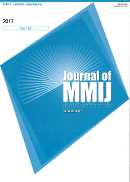
- |<
- <
- 1
- >
- >|
-
花野 峰行2017 年 133 巻 9 号 p. 214-222
発行日: 2017/09/01
公開日: 2017/09/08
ジャーナル オープンアクセスThe Matsukawa geothermal power station has been in commercial operation since 1966. Its geothermal reservoir was discovered by chance, by drilling of hot spring wells by the local administration in 1952. Japan Metals & Chemicals (JMC) noticed this phenomenon and started exploration for a geothermal power development in 1956. Then, JMC and Geological Survey of Japan (GSJ) started collaborative study in 1958. The biggest technical challenge for success in Matsukawa was a decision of drilling target depth for steam production and a casing shoe depth to stop in-flow of shallow cold water. It was examined through measurements of water levels in three exploration wells, borehole temperature profiles and flow rates of rivers. Geological and geophysical studies by GSJ helped this study. Owing to this study, the 1st production well succeeded to produce dry steam in 1964 and led to a success in the first commercial scale geothermal power development in Japan.
抄録全体を表示PDF形式でダウンロード (6386K)
-
羽柴 公博, 福井 勝則, 小泉 匡弘2017 年 133 巻 9 号 p. 223-229
発行日: 2017/09/25
公開日: 2017/09/27
ジャーナル オープンアクセスRock drills were developed about two hundred years ago, and hydraulic percussion rock drills are about half-century old. Performance and efficiency of rock drills have been increased by a number of researchers and engineers. Percussion energy was dramatically increased with changing the power source from pneumatic to hydraulic pressures; rods and rod joints were improved to endure the high percussion energy; carbide button bits were developed for hard rock drilling. This paper reviewed the previous studies and future issues on the drilling processes with hydraulic percussion rock drills. Studies on the stress wave propagation in rods and rod joints were based on theoretical and graphical methods and recently on numerical simulation. Studies on the interaction between a button bit and rock included crack propagation in rock, force-penetration relationship during drilling, and bit wear. Studies on the factors affecting drilling efficiency and drilling rate made a transition from simple to precise numerical simulations. Finally, important future issues were presented for the further progress of hydraulic percussion rock drills.
抄録全体を表示PDF形式でダウンロード (1554K)
- |<
- <
- 1
- >
- >|